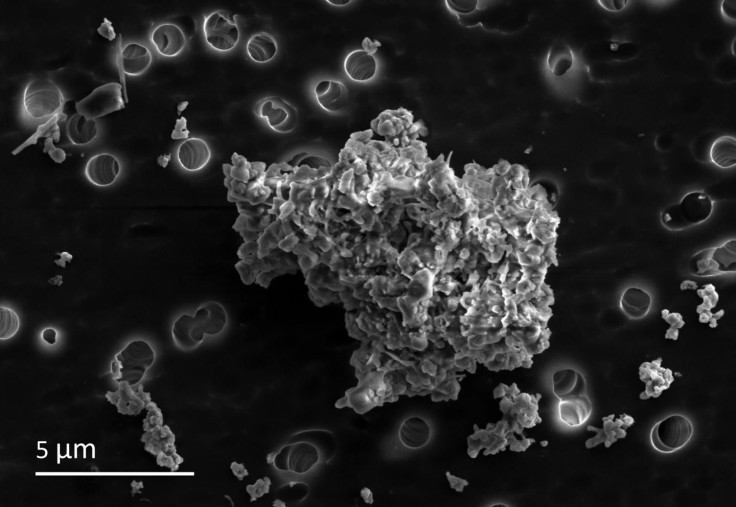Interstellar Dust Remains From Early Solar System Found In Comet Particles

An international team of researchers has found minute particles of interstellar dust that date back to the origin of Solar System some 4.6 billion years ago.
The dust, identified in particles collected from Earth’s atmosphere, is believed to have come from comets that came to be in the outer regions of the so-called solar nebula, where the chaotic formation of our Solar System’s planets took place.
It has long been believed that the initial solids or dust that led to planetary formation contained particles like amorphous silicate, carbon and ices. However, scientists posited that most of these particles may have been consumed in the process, while the rest could have been trapped in small, icy cold bodies forming in the outer nebula.
The theory appeared viable but was not proven until the research team from the University of Hawaii at Manoa (UH Manoa) collected the interplanetary dust particles, aka IDPs, in question and took a closer look at them while working with the Department of Energy's Lawrence Berkeley National Laboratory.
The work revealed that the particles contained tiny grains of glass embedded with metal and sulfides. These so-called GEMS are extremely small, spanning tens to hundreds of nanometers in diameter, which would be less than a hundred-thousandth the thickness of a strand of human hair.
When the team employed electron microscopy to study the chemical makeup of these grains, they were totally surprised. The sub-grains that glued together to form the glassy material appeared to have formed in completely different conditions, much before the formation of the comets they came from.
This was because the carbon that bound these sub-grains was different from the type of carbon that aggregated the GEMS and other components of cometary dust. The latter, as the researchers said, was low in density and decomposed even with the slight amount of heating — a fact that suggested that the GEMS may have formed in a cold environment like in the outer solar nebula, after trapping the leftover dust. "The presence of specific types of organic carbon in both the inner and outer regions of the particles suggests the formation process occurred entirely at low temperatures," Jim Ciston, a member of the team, said in a statement.
The researchers even noted that the findings may even provide insight into how these building blocks of planets accumulated into larger bodies without requiring extreme heat. "Our observations suggest that these exotic grains represent surviving pre-solar interstellar dust that formed the very building blocks of planets and stars,” Hope Ishii, one of the authors behind the latest work, said in another statement.
“If we have at our fingertips the starting materials of planet formation from 4.6 billion years ago, that is thrilling and makes possible a deeper understanding of the processes that formed and have since altered them."
The study titled, "Multiple generations of grain aggregation in different environments preceded solar system body formation," was published June 11 in the journal Proceedings of the National Academy of Sciences.

© Copyright IBTimes 2024. All rights reserved.




















